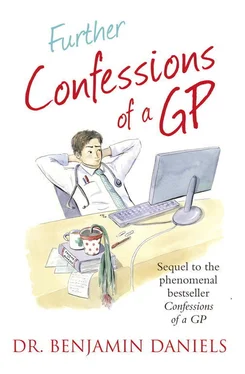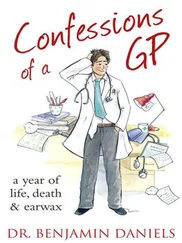As doctors, it is our job to learn from our mistakes, share them, be honest and open about them, and most importantly make sure they don’t happen again. As patients, I would advise that you ask questions, share medical decisions with your doctor and educate yourselves about your own health and illnesses. Medical mistakes have been, are and will always be made, but fortunately genuine cases of medical negligence are still rare. The cynic in me wonders if the constant drip-feeding of medical error stories is an attempt to convince the public that the NHS is failing and therefore dampen down any opposition as widescale privatisation of the health-care system is sneaked in through the back door.
The exposure of child abuse allegedly perpetrated by Sir Jimmy Savile was a massive shock to me. As a kid in the 1980s, I used to love Jim’ll Fix It and was once greatly envious of those children who got to sit on his knee. Not any more. Although never my greatest hero (Daley Thompson wins that award), Savile was nonetheless an integral part of my childhood. A part that has now been completely tarnished.
Were I not a doctor, these allegations of abuse might have felt like a watershed moment for me. They might have ended a certain naivety bestowed upon me by the good fortune of a sheltered, happy and abuse-free childhood. As a medic, that innocence ended when I first set foot on a psychiatric ward a decade or so earlier. I was astounded at how many of the inpatients of both sexes had been abused as children or young adults. In medical school I had learned that mental illness was something that randomly afflicted people due to a combination of genetics and miss-firing neurotransmitters. I had been taught that in mental illness brain chemicals go wrong in the same way that chromosomes go wrong in Down’s syndrome, or blood clotting doesn’t work in haemophiliacs. Reading through the medical records of the female patients on the acute psychiatric ward, there was not a single one who had not suffered some sort of trauma as a child or young adult. Stories of sexual abuse, physical abuse, neglect and usually a combination of all three jumped out from almost every set of notes.
The psychiatrist in charge of the ward told me that she would be out of a job if she could somehow prevent anyone from ever being abused as a child. The psychiatric wards would be empty, she told me. Those wards weren’t empty. They were in fact full to bursting with desperate, damaged, unhappy people and the constant pressure of more people needing to be admitted was always there. Now clearly not everyone abused ends up with a mental illness and not everyone with a mental illness was abused. I’m sure genetics and brain chemicals also play their part, but the association between childhood trauma and mental illness in adulthood is well documented. I wonder if those adults who do the abusing even consider just how much pain and torment they cause and just how long it lasts.
Most A&E departments have regular self-harmers who repeatedly present to the department with cuts on their arms that need stitching up. In A&E, we only asked for the details of what had happened that day and would often feel frustrated spending time mending what appeared to be self-inflicted injuries. Here in general practice, we get the whole life story and soon learn that although the cuts on the arms are self-inflicted, the underlying damage was probably meted out by an adult abuser some years earlier. As a doctor it doesn’t necessarily make self-harm any easier a problem to manage, but at least it goes some way towards helping me understand it.
Of course, everyone’s aim is to prevent children being abused. As with Jimmy Savile’s victims, it has taken until adulthood before many of my patients have opened up to me about the abuse they suffered as children. My constant anxiety is about how many of my young patients are suffering abuse right now. Statistics would suggest at least one or two, which is a sobering thought and enough to persuade me to keep asking questions and stay vigilant.
There aren’t many positives to take from the allegations that flooded the media following the exposure of Savile, but I hope that the current publicity might encourage us adults to remember how common child abuse is and to always bear it in mind when working with children and young people. Even more importantly, perhaps it will inspire one or two children to feel empowered enough to step forward and speak up about abuse they are suffering from right now. Many of us are wondering about the adults who were around during the 1970s, and asking how did they let it happen? Wouldn’t it be a great shame if in 40 years from now people look back on this generation and ask the same thing?
‘I reckon I’ve got AIDS, Doctor.’
‘Right, okay, erm… what makes you think that?’
‘Well, I think that I might have caught it the other night.’
‘Did you sleep with someone you think might be at risk?’
‘Well, up until last week I’d never had sex before, but I think something might have happened on Friday night.’
‘Right, so what happened?’
‘Well, I got really drunk. I remember being in a club and then my friends say they lost me for about half an hour until they found me asleep in the kebab shop with sick down me and took me home.’
‘And are you worried you caught HIV that night?’
‘Well, I don’t remember you see, so I could have done. Anything could have happened in that half an hour.’
‘Well, yes, in theory, I guess, but do you really think you might have slept with someone when you were in that state?’
‘Might have done.’
I looked up at Nathan and wondered how I might put this without sounding mean.
‘I guess what I’m trying to say, Nathan, is that isn’t it a bit unlikely that you had sex in the half an hour between vomiting over yourself in a nightclub and then being found asleep in the kebab shop next door?’
Nathan looked at me blankly, as if this didn’t seem very unlikely at all. I would never claim to understand the inner workings of the female mind, but I can’t believe that any girl would consider a drunken, barely conscious Nathan covered in vomit to be sexually irresistible. I was really going to have to spell this out.
‘I guess what I’m just trying to say is that isn’t it a little bit improbable that you were able to meet a girl, chat her up, take her somewhere quiet and persuade her to have unprotected sex with you, while then managing to get back into the town centre and falling asleep in the kebab shop where your friends found you just 30 minutes later. All this while being so drunk that you could barely walk and were covered in vomit.’
Nathan did look a bit crushed. Perhaps I had overdone it a bit, although I did refrain from mentioning that in that sort of drunken stupor he was unlikely to have been able to get an erection. I really had pulled his story apart like a top lawyer laying into the defendant. Surely faced with such damning evidence, Nathan would crumble and accept that he probably didn’t catch HIV that night.
‘I still think I should have a test just to be sure. It would make me feel better.’
Under normal circumstances regular HIV tests are to be commended, but in Nathan’s case I was worried that by giving him a test I was colluding with his health anxieties. Nathan’s irrational fears about his health weren’t new. A few months earlier he’d been convinced that his very benign looking mole was skin cancer and wouldn’t be reassured until I sent him to see a dermatologist. He had also recently convinced himself he had a heart problem because he was sometimes aware of his heartbeat and so kept coming to see the nurse and demanding an ECG. In fact looking through the notes, Nathan was in the surgery almost every week.
Читать дальше
Конец ознакомительного отрывка
Купить книгу











![Benjamin Franklin - Memoirs of Benjamin Franklin; Written by Himself. [Vol. 2 of 2]](/books/747975/benjamin-franklin-memoirs-of-benjamin-franklin-wr-thumb.webp)
![Benjamin Franklin - Memoirs of Benjamin Franklin; Written by Himself. [Vol. 1 of 2]](/books/748053/benjamin-franklin-memoirs-of-benjamin-franklin-wr-thumb.webp)